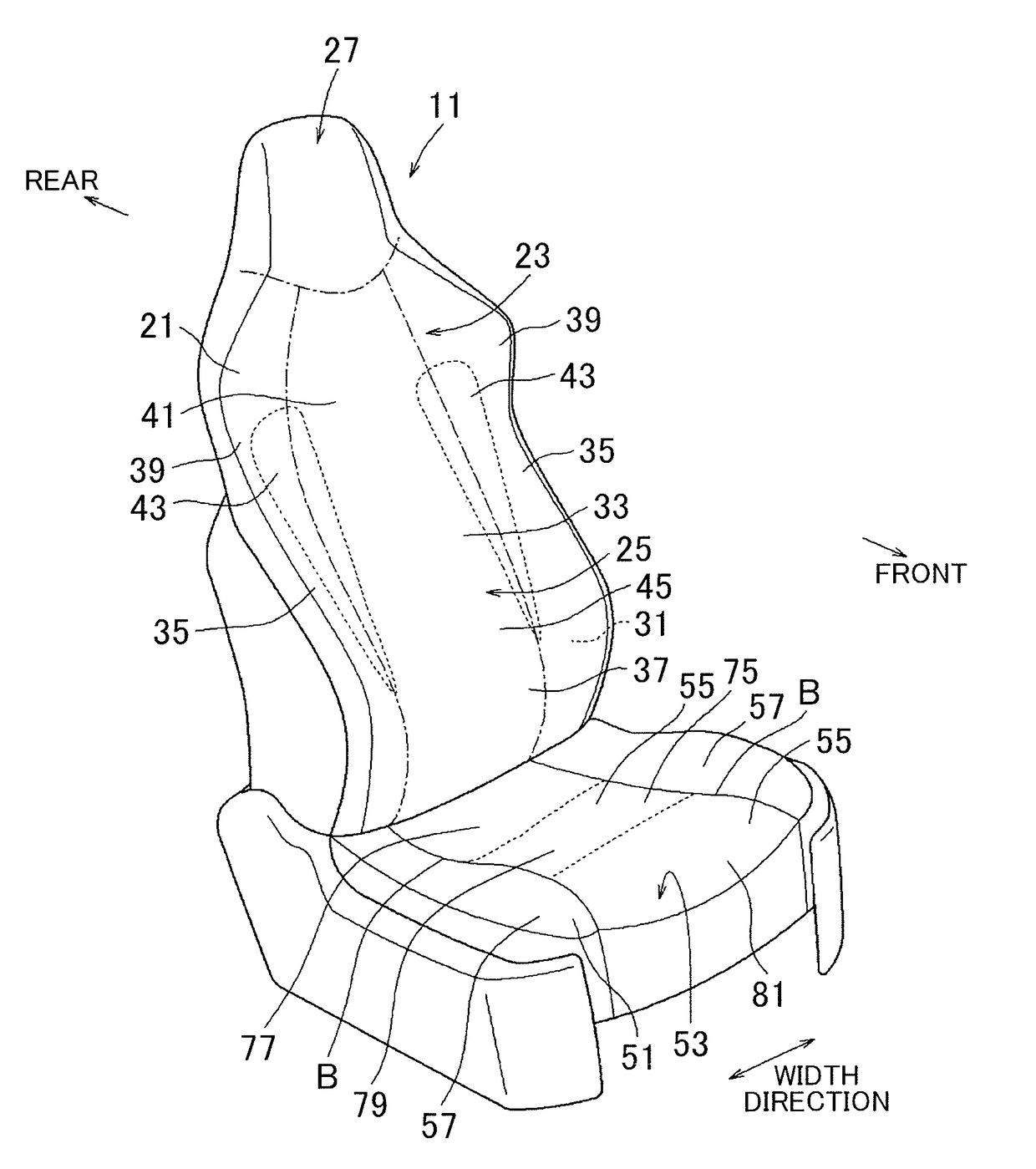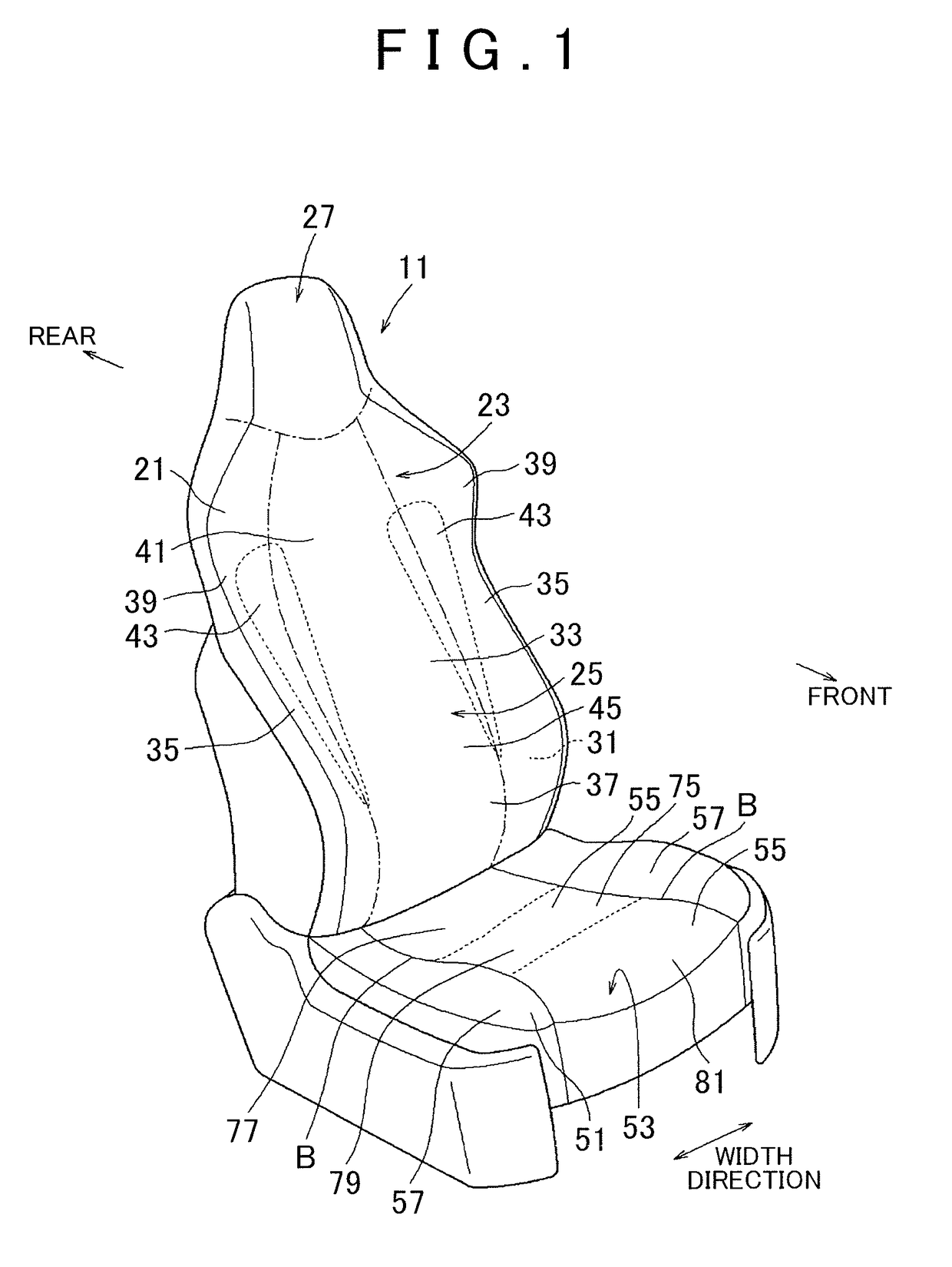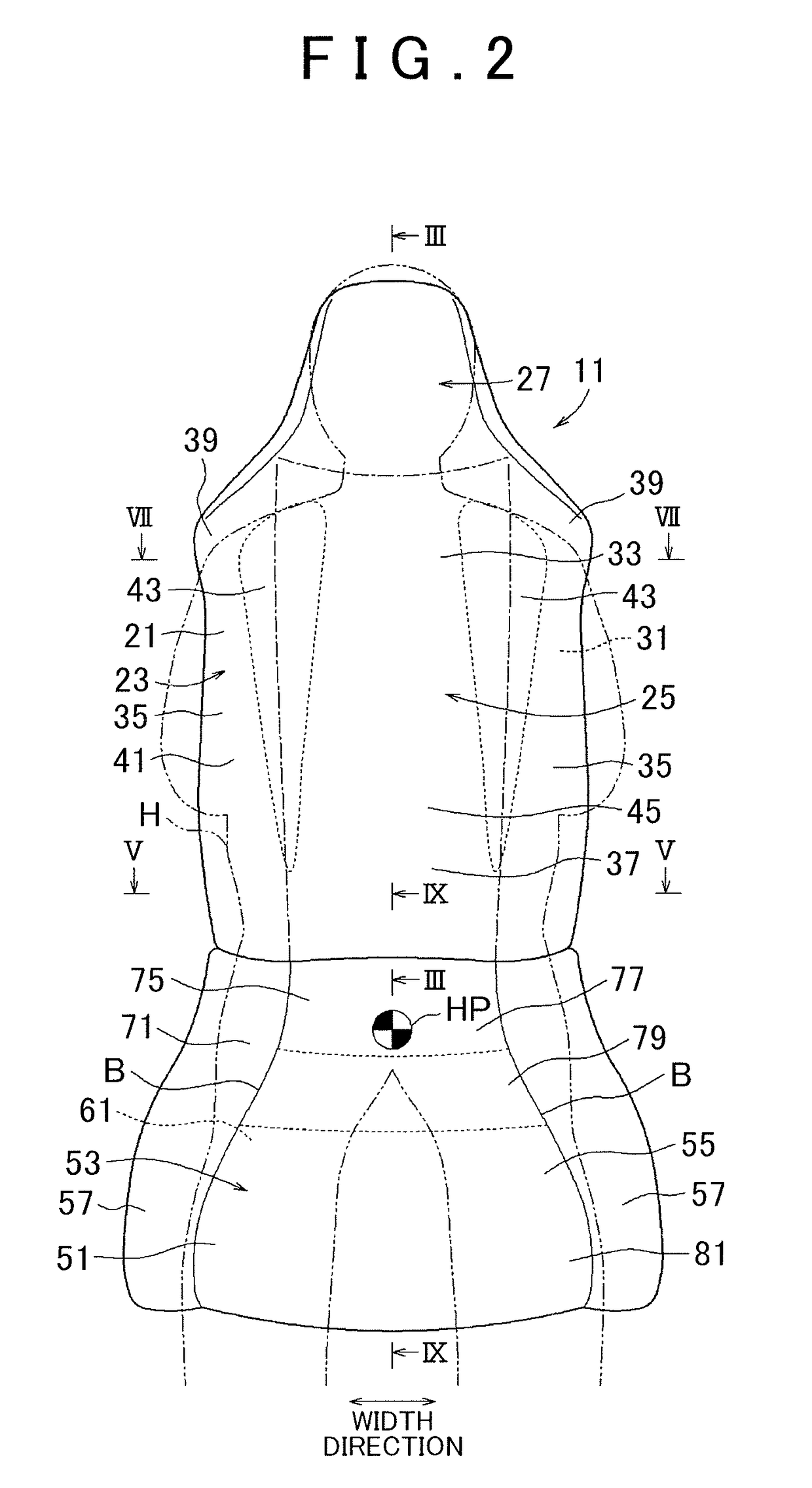Vehicle seat
a technology for vehicles and seats, applied in the field of vehicles, can solve the problems of difficult to improve seating comfort and limit the adjustment of seating comfort, and achieve the effects of reducing density, reducing thickness, and reducing weigh
- Summary
- Abstract
- Description
- Claims
- Application Information
AI Technical Summary
Benefits of technology
Problems solved by technology
Method used
Image
Examples
first embodiment
[0029]First, the configuration of the seat back 21 will be described. The seat back 21 has, as a supporting surface 23 that supports a seated occupant H, a backrest surface 25 that supports the back, and has a headrest portion 27 integrally formed on its upper side. Note that in FIGS. 1 and 2, the distinction between the backrest surface 25 and the headrest portion 27 of the supporting surface 23 is shown by a dashed line for convenience. As shown in FIG. 3, the supporting surface 23 is formed by a seat pad 31. The seat pad 31 is covered with a shell 29, which is a rigid body, at its rear surface and held by the shell 29. The seat pad 31 is made of urethane foam and has uniform hardness. The front surface of the seat pad 31 that forms the supporting surface 23 is covered with a skin 41 along its surface shape.
[0030]As shown in FIGS. 1 and 2, the backrest surface 25 of the seat back 21 has a main portion 33 that supports the back of the seated occupant H at the intermediate portion ...
second embodiment
[0039]First, the configuration of the seat cushion 51 will be described. As shown in FIGS. 1 and 2, the seat cushion 51 has, as the supporting surface 23 that supports the seated occupant H, a seating surface 53 on which the seated occupant H sits down. The seating surface 53 is formed by a cushion pad 61. The cushion pad 61 functions as a seat pad. As shown in FIG. 9, the cushion pad 61 is put on a frame-shaped cushion frame (not shown). The upper surface of the cushion pad 61 forms the seating surface 53, and the lower surface thereof is elastically supported by S-shaped springs (not shown) laid over the cushion frame. The cushion pad 61 is made of urethane foam. The cushion pad 61 is covered with a cushion cover 71 arranged along the front surface of the seat cushion 51. The shape of the upper surface of the cushion pad 61, i.e., the shape of the seating surface 53 is substantially flat at the intermediate portion in the width direction of the cushion pad 61. The upper surface o...
PUM
 Login to View More
Login to View More Abstract
Description
Claims
Application Information
 Login to View More
Login to View More - R&D
- Intellectual Property
- Life Sciences
- Materials
- Tech Scout
- Unparalleled Data Quality
- Higher Quality Content
- 60% Fewer Hallucinations
Browse by: Latest US Patents, China's latest patents, Technical Efficacy Thesaurus, Application Domain, Technology Topic, Popular Technical Reports.
© 2025 PatSnap. All rights reserved.Legal|Privacy policy|Modern Slavery Act Transparency Statement|Sitemap|About US| Contact US: help@patsnap.com



